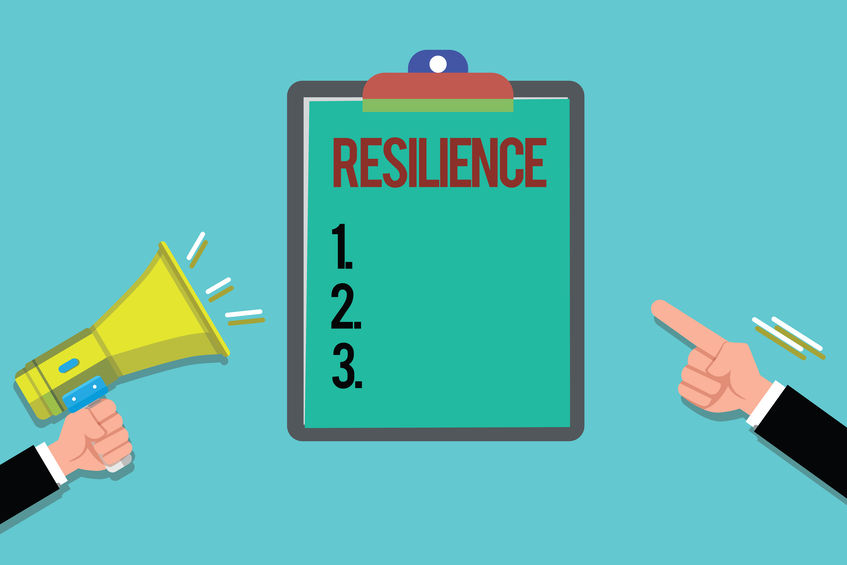Critical to any professional’s success is resilience. Markets, businesses, and opportunities move too fast for us to hope to navigate without hitches. It’s like white-water rafting. If you aren’t getting doused now and then, and even tossed out of the raft, you aren’t having fun.
Three steps will boost your resilience.
Step#1: Manage your mindset
We’re not wired for resilience to face of today’s challenges. Our brains got rewarded and wired for defense. So, when adversity strikes, we follow the pre-programmed response of fight or flight (or in today’s world, freeze) driven by the amygdala or “lizard brain.” While that’s great if you are fighting off tigers, today’s challenges require thought and weighing of options rather than knee-jerk reactions.
What can you do?
A. Check your assumptions to clarify your understanding of the situation. Don’t let fear hijack your thinking. Use reflective listening to check your assumptions about what’s being said. Start by reflecting back the gist of what you heard. Was the bit of feedback you interpreted as a slashing criticism just an observation? Give others a chance to clarify their statements before you defend and escalate based upon your initial self-protective reaction.
B. Choose a growth mindset vs. a fixed mindset,
As Carol Dweck describes in her book “Mindset,” this choice is pivotal. People with a fixed mindset respond to adversity with an attitude of “It is what it is, and neither I nor it can change” miss seeing opportunities. They become frozen and defensive about the situation at hand. In contrast, people with a growth mindset see “Life is a work in progress; let’s explore.” They don’t need to defend themselves because setbacks are just part of growing.
C. Harness your hopes.
When you remain focused on your hopes and aspirations, the lizard brain settles down and your higher functions turn on. Your cerebral lobes aid you in thinking through creative alternatives. Your pre-frontal cortex kicks in to make thoughtful choices.
Step #2: Multiply Your Resources
Most people grossly under-use the resources they have.
A. List the resources you have.
Just the act of listing your resources will help you feel more resourceful. You’ll be less likely to succumb to fearful thinking. In “Take Charge of Your Talent,” we encourage people to think of 100 resources that they can tap. Experience shows that by the time you’ve listed 100 you will have accomplished your objectives.
B. Boost your use of the resources.
It’s not enough to have the resources. You need to use them. Make a candid assessment of how much of the potential of each resource you are tapping. Many people are using only 10% to 20% of what their resources could provide. Think through how you can make better use of the resources you have.
C. Create “mash-ups” to accelerate progress.
Silicon Valley software companies accelerate their results because they take bits and pieces of existing apps and put them together. This is much faster than writing code from scratch. You can do the same with combinations of people, places, and things on your resource list. Do some brainstorming to create new opportunities by combining building blocks you have in new ways.
Step #3: Make Big Requests
You won’t bounce back from adversity and get to a better place on your own. You need to overcome the natural inclination after a setback to hide or try to redeem yourself through your efforts alone. Now’s the time to reach out to others.
Many people feel reluctant to make requests of others. They don’t want to impose, don’t feel that they have something to offer in return, or fear rejection. We’ve encountered thousands of people, even otherwise successful people, who cower at asking for what they want.
A simple formula for asking has unlocked successful support. Here’s a quick overview:
(a) Express your intention in ways that create a bridge between your interest and the recipient’s
(b) Provide clarifying observation so that the recipient understands the circumstances and the important role she or he can play
(c) Make a clear, concise request
(d) Close with a confirmation so you are clear about your agreement
Write our your requests using this formula and practice with someone before you make a big ask. Get feedback on how your request comes across. Based upon what you learn, modify your approach. If you want examples of successful applications, you can find them in “Take Charge of Your Talent.”
Resilience arises from a learned set of skills conscientiously applied. Practice the three steps and associated skills and you will enjoy running the white water rapids of today’s challenges and opportunities.
